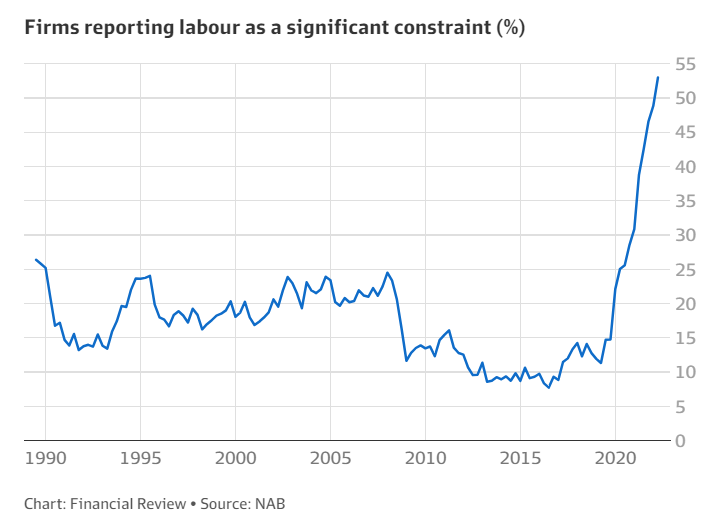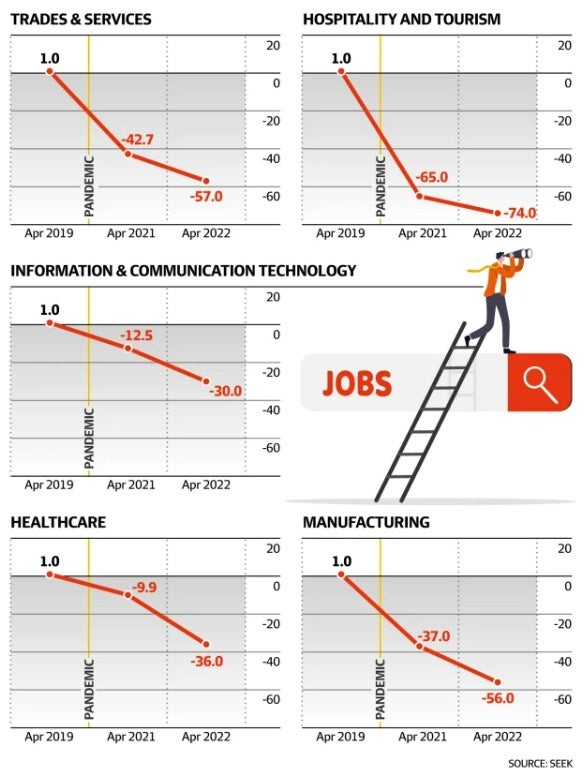
Australia doesn’t have a great track record with preparing its population when a new wave of society-changing innovation comes through. With Industry 4.0 now powering ahead at full speed globally, questions do need to be asked about how ready Australia is — especially with regard to the IT sector, which is going to play an integral role in this particular revolution.
There is no better example of Australia’s struggles with transition than in the car manufacturing industry. Australia once had a thriving industry with major manufacturing facilities for Holden, Toyota and Ford. That wound down and all but disappeared about a decade ago, taking with it approximately 30,000 jobs, and the government and industry alike drew a lot of criticism for how poorly it supported those workers who needed to shift careers completely.
The world is now firmly stepping into the era of Industry 4.0 — the next big step in our capacity to work and produce goods and a revolution that will enable companies to significantly improve operational efficiency, reduce costs and enhance product quality through the use of advanced technologies.
Industry 4.0 fosters innovation and competitiveness by facilitating data-driven decision making and adaptive manufacturing processes by bringing together robotics, automation, the Internet of Things, 5G, edge computing, AI and other technologies in such a way that a lot of labor-intensive work humans currently do will be easy to replace.
SEE: Discover how tech pros in Australia are preparing for AI in their industry.
Because Industry 4.0 brings technology much closer to the production process, it’s going to make many purely labor-driven jobs redundant. However, that will also be an opportunity for humans to move up the “value chain” and take on work that is more interesting and contributes more to creativity and innovation.
That is if society, across industry and government, is able to facilitate the transition of human skills to, sometimes, entirely different fields of expertise.
In 2018, research suggested that Australia was struggling to produce the skills and training environment to facilitate and capitalize on Industry 4.0. Then, in a speech, the Australian Minister for Industry and Science, Ed Husic acknowledged that this is still an issue that hasn’t been addressed.
Worse, Australia seems to have some level of cultural resistance to the idea of a high-skilled future.
In acknowledging that Australia needs to start moving to meet this challenge, Husic said that the country’s national industry policy should have the “goal of more Australian workers making more things in Australia using Australian know-how and Australian resources.”
“Of course, there are those who criticize this new dynamic approach,” Husic said. “They seem to be sticking to economic ideas that were in fashion in the 80s …
“They say things like ‘Why have a battery industry in Australia, let’s just focus on what we’ve always done best, raw materials production.’ It seems that if you can chop it, dig it, grow it and then ship it then that’s enough.”
For any nation, industry, sector, business or individual to thrive in the world of Industry 4.0, having deep access to several skills is critical — and they’re almost all IT-based skills. Industry 4.0 has an intense need for data literacy, analytical skills, the management of digital media and a fundamental understanding of automation and artificial intelligence.
Then, there are the skills required for managing a business filled with highly qualified IT workers and “smart” technology. Business leaders will continue to need advanced communication skills, an ethical and responsible approach to leadership, creativity and imagination, emotional intelligence, adaptability to change, resilience and the ability to manage diverse and remote teams.
The problem is that Australia simply doesn’t have enough of those skills. Over the past few years, the number of firms that reported that “labor” was a significant constraint not only burst through the 30% barrier for the first time in history, but it subsequently smashed through 50% thereafter (Figure A).
Figure A
More than one in two (59%) of organizations find that their applicants lack the required skills, and four in five (79%) aren’t even getting enough applicants in the first place.
Even more concerning is that the sectors where the skills shortage is cutting deepest are the ones where Industry 4.0 is going to play a critical role. Trades and services, hospitality and tourism, IT as a sector, healthcare and manufacturing are all facing a rapid dive in job applications (Figure B). Without finding a solution to this skills crisis, Australia is in real danger of missing the opportunity entirely.
Figure B

One of the main solutions that has been traditionally leveraged to overcome a shortfall in workers has been to turn to immigration, but that’s only going to provide so much relief, especially when there’s a housing shortage that is putting political pressure on limiting the number of immigrants.
There is plenty that can be done with the domestic population to better prepare them for the impact of Industry 4.0.
Around 75% of Australian workers are keen to upskill. The breadth of skills required in Industry 4.0 would allow for most to find new competencies aligned with their capabilities.
This would be a particularly significant opportunity in those traditionally nontechnical industries, like healthcare, hospitality and trades. Helping existing employees develop IT capabilities is a useful way for employers to help them with ongoing career development, and thus improve morale and retention. It also means those sectors will have people with technology skills that better understand the sector rather than trying to bring in IT professionals to sectors they’re unfamiliar with.
Retaining skills is as important as finding new skills. Currently, organizations struggle to understand what employees actually want. It’s not the raw paycheck. Instead, employees — especially in the younger generations — want to see support with childcare, the opportunity to upskill and undertake training on company money, flexible working hours, the ability to work remotely and more respect for the work-life balance.
While employees are worried about AI and automation taking their jobs, a better approach would be to allow AI and automation to take the less interesting part of their jobs, enabling the employee to spend more time focused on higher-value projects. This will ultimately lead to the kind of innovation that Industry 4.0 champions anyway, but getting the organization used to the idea of replacing job descriptions, not roles, right from the start will be essential in managing a smooth transition to innovation.
For existing IT workers, the opportunities are going to be almost unprecedented; however, it will be increasingly critical that IT workers spend some time upskilling themselves. Their high levels of competency in technology is going to make them natural choices for leaders in organizations undergoing Industry 4.0 change. IT professionals are going to be increasingly called on to have a deep understanding of the sectors that they’re working in and not only the technology powering their businesses.